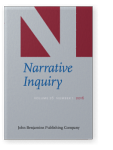“I hope they have a lot of Vania out there”
Narrative-in-interview, positioning, and ideologies of language and identity in Hawai‘i
The question of use of second language speakers’ personal narratives-in-interview as data has been widely debated in the applied linguistics field. I subscribe to scholars before me who argue for an analysis beyond content but one that also takes into consideration context and form. Bamberg’s positioning theory (1997; 2004) guides this analysis as I examine the storied world, the storytelling world, and the existing discourses in the personal narratives-in-interview by a woman from the island of Chuuk residing in Hawai‘i. I discuss the linguistic, rhetorical, and interactional properties of her narratives, how she positions herself in relation to ideologies of language and identity that have value in her spaces, and juxtapose them against sociolinguistic and socio-historic contexts in which they were produced. I argue that by looking at the interdependence between all positioning levels (i.e., context, content, and form), it is possible to understand how the narrator positions herself with regards to societal discourses on language and identity both in the micro and macro contexts of the interview space and of Hawai‘i.
References
Bamberg, M
(
2004)
‘We are young, responsible and male’: Form and function of ‘slut-bashing’ in the identity constructions in 15-year-old males.
Human Development, 47(6), 331–353.


Bamberg, M., & Georgakopoulou, A
(
2008)
Small stories as a new perspective in narrative and identity analysis.
Text & Talk - An Interdisciplinary Journal of Language, Discourse Communication Studies, 28(3), 377–396.


Barkhuizen, G
(
2010)
An extended positioning analysis of a pre-service teacher’s better life small story.
Applied Linguistics, 31(2), 282–300.


Bourdieu, P
(
1986)
The forms of capital. In
J. Richardson (Ed.),
Handbook of theory and research for the sociology of education (pp. 241–258). New York, NY: Greenwood Press.

Chase, S.E
(
2008)
Narrative inquiry: Multiple lenses, approaches, voices. In
N.K. Denzin &
Y.S. Lincoln (Eds.),
Collecting and interpreting qualitative materials (3rd ed., pp. 57–94). Thousand Oakes, CA: Sage.

Compact of Free Association included in U.S. Pub
Law 99–239, Compact of Free Association Act of 1985, 48 USC 1681 note. 59 Stat. 1031 and amended Dec. 17, 2003 by House Jt. Res. 63; U.S. Pub. Law 108–188.
De Fina, A
(
2008)
Who tells which story and why? Micro and macro contexts in narrative.
Text & Talk-An Interdisciplinary Journal of Language, Discourse Communication Studies, 28(3), 421–442.


Deleuze, G., & Guattari, F
(
1987)
A thousand plateaus: Capitalism and schizophrenia (Vol. 21). Minneapolis: University of Minnesota Press.

Goffman, E
(
2001)
Footing. In
M. Wetherell,
S. Taylor &
S.J. Yates (Eds.),
Discourse theory and practice: A reader (pp. 93–110). London: Sage.

Granger, C
(
2004)
Silence in second language learning: A psychoanalytic reading. Clevedon, UK: Multilingual Matters.


Hawai‘i Appleseed Center for Law and Economic Justice
(
2011)
Broken promises, shattered lives - The case for justice for micronesians in Hawai‘i. Hawai‘i, HI. Retrieved from
[URL].

Hawai‘i Interpreter Action Network
(
2013)
Support with amendments, HB 266 HD1, relating to language access. Honolulu, HI: M. Alohalani Boido.

Hawai‘i Public Housing Authority
FAQs: Federal Public Housing. Retrieved from
[URL].
Holdway, J
(
2012)
Language access to public services: Interpretation-related challenges to policy implementation in Hawai‘i (unpublished scholarly paper). University of Hawai‘i at Manoa, Honolulu, Hawai‘i.

Holstein, J.A., & Gubrium, J.F
(
2004)
The active interview. In
D. Silverman (Ed.),
Qualitative research: Theory, method and practice (pp. 140–161). Thousand Oaks: Sage.

Kaomea, J
(
2000)
A curriculum of aloha? Colonialism and tourism in Hawai ‘i’s elementary textbooks.
Curriculum Inquiry, 30(3), 319–344.


Kaomea, J
(
2014)
732 Interpretative toolkit (under construction) [PDF document]. Retrieved from Lecture Notes Online Web site:
[URL].
Keany, M
(
2011,
August).
Micronesian in Hawaii.
Honolulu Magazine: News & Opinion. Retrieved from
[URL].

Labov, W
(
2008)
Oral narratives of personal experience.
Cambridge Encyclopedia of the Language Sciences. Retrieved from
[URL].

Lucius-Hoene, G., & Deppermann, A
Morse, J.M
(
1994)
Designing funded qualitative research. In
N.K. Denzin &
Y.S. Lincoln (Eds.),
Handbook of qualitative research (pp. 220–235). Thousand Oaks, CA: Sage.

Norrick, N.R
(
1998)
Retelling stories in spontaneous conversation.
Discourse processes, 25(1), 75–97.


Pozniak, K
(
2009)
Talking the” immigrant talk”: Immigration narratives and identity construction among Colombian newcomers.
Canadian Ethnic Studies, 41(1–2), 173–190.


Shek, D., & Yamada, S
(
2011)
Health Care for Micronesians and Constitutional Rights.
Hawaii Medical Journal, 70(11 Suppl 2), 4–8. Retrieved from
[URL]
State of Hawaii Office of Language Access
About us. Retrieved from
[URL]
Weedon, C
(
1987)
Feminist practice and poststructuralist theory. London: Blackwell.

Žižek, S
. (
1991).
Looking awry: An Introduction to Jacques Lacan through Popular Culture. Cambridge: The MIT Press.

Cited by
Cited by 2 other publications
Leal, Priscila & Betsy Gilliland
2023.
Border-Crossings, Family, Friends, and Education: Pacific Islander Girls in Hawai‘i Writing their Lives.
Journal of Language, Identity & Education ► pp. 1 ff.

This list is based on CrossRef data as of 9 june 2024. Please note that it may not be complete. Sources presented here have been supplied by the respective publishers.
Any errors therein should be reported to them.
